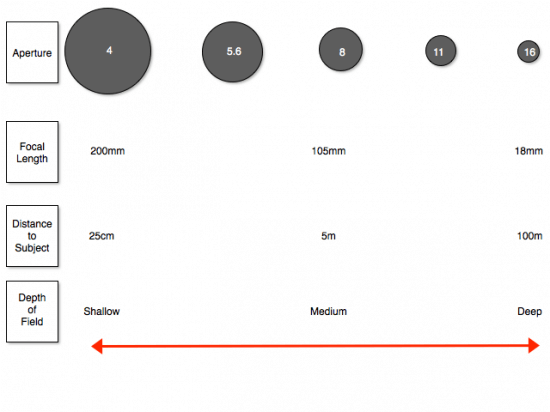Aperture & Depth of Field
In addition to influencing exposure, aperture also has a huge impact on depth of field (the amount of an image that in focus). Selecting a large aperture (small F number) will enable you to achieve a shallow depth of field. By using a small aperture (large F number) you will get a wide depth of field.
Remember that by using Aperture Priority mode you chose the aperture and the camera selects the correct shutter speed to achieve a good exposure.
Focal length and distance to subject also play an important role in depth of field.
To achieve the shallowest possible depth of field you should combine a long focal length (e.g. 55mm or even 200mm) with a large aperture and get close to your subject with the background far away.
This diagram summarises the influence of aperture, focal length and distance on depth of field:

Here are some examples:
This photo was taken using an aperture of F1.8 (very large aperture) and an 85mm lens (long focal length), and we are quite close to the subject. We have a narrow depth of field.

This photo was taken with F11 (small aperture), a 24mm lens (short focal length) and we are further from the subject. We have wide depth of field.

